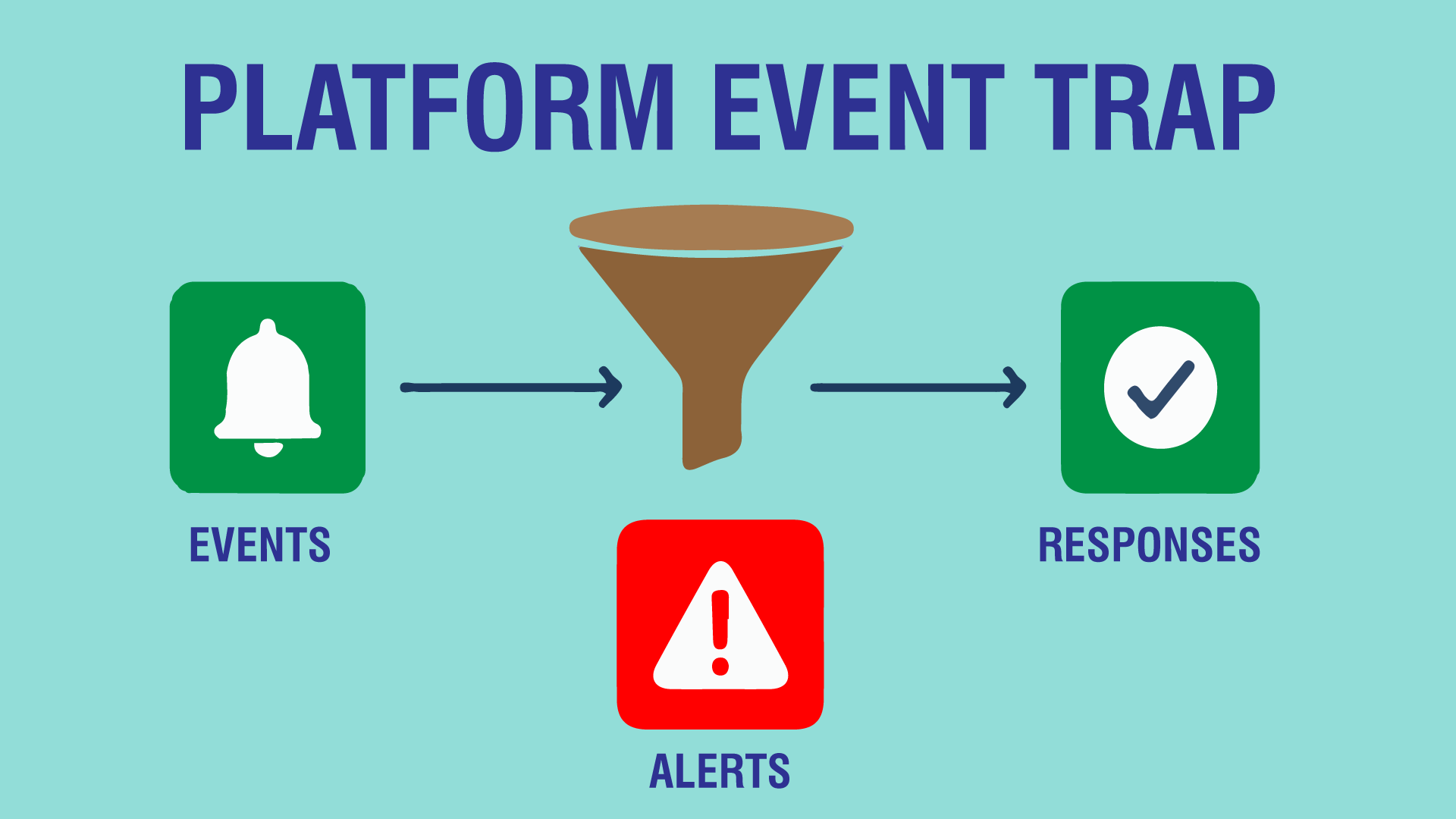Table of Contents
Platform Event Traps Introduction.
Platform events are potent concepts employed in contemporary designs- particularly in event-driven systems – that support both real-time communication and asynchronous processing. And great responsibility comes with great power. Platform Event Traps can be seen as the traps that developers, managing or architecting event-driven solutions, end up falling into.
When you have experienced an app sluggishly, processes restarting, or logs full of duplicate messages simply because the program was back in a platform event trap without your inquiry, then likelihood is that you have walked into a platform event trap.
And now we shall have it simplified down to a common variety of speech.

What Is Platform Event Traps?
Platform Event Traps are the problems, which arise when systems based on an event-driven system act in unpredictable, uncontrolled, or inefficient manners. The pitfalls may cause loss of performance, displaying wrong data, security breaches, and even system total collapse in case of improper management.
Imagine them to be the wires in a maze that you cannot even see-hit one and the whole thing can go wrong.
The Basics of Learning Event Traps.
Since platform events are processes that aren’t observable, problems do not always manifest themselves immediately. In so doing, they may be extensive and hard to track. Early event trap awareness helps you to avoid:
Data loss
High latency
Locked-up queues
Repetitive loops
Failure to predict system behavior.
These risks have to be identified by any developer or architect using events.
How Platform Events Work
You must know the playground before you get to know the traps.
The essential Elements of Platform Events.
Event Producers
This is where the events start. It might be a system update, user action or API call.
Event Subscribers
Listening and responding systems or components.
Event Channel
The pipeline that is used to convey events of producers to subscribers.
It works the same way as a messaging application: a person sends the message, the server processes it, another receives it.
Asynchronous vs Real-Time Event Handling.
Real-time: Instantaneous messages (e.g. status updates).
Asynchronous: Event queued and to be processed later (e.g., batch jobs).
The issue of timing is important since the traps are highly likely when timing assumptions are mistaken.

Common Platform Event Traps
Now, we are going to dive into the problems that most individuals experience, which happen to be unknowingly.
Overproduction of Events
The number of events that are published can overwhelm your system. It is such as opening 50 taps on a small bowl it will swell.
Infinite Event Loops
This occurs when an event issues an event triggering subscriber that publishes the identical event, and the process goes on and on.
Example:
Event A 1 → triggers Subscriber X 1 publishes Event A 1 again repeat.
Boom. Your system melts.
Inadequately Developed Event Schemas.
An ambiguous or confusing schema will create confusion between the producers and the consumers.
The result? The processing errors, mismatch or the subscribers with no idea on which fields are important.
Unmanaged Subscriber Load
When the number of events received is too large, too early, the subscribers may become overwhelmed.
There is no use just like attempting to read 100 emails at a time- at one time or the other you fall behind and everything in the inbox turns out to be a mess.
Latency and Delivery Delays
Events aren’t always instant. Delays can lead to:
Race conditions
Inaccurate data timing
Wrong decision-making
Absence of Tracking and documentation.
When you are unable to see event flow, you are unable to repair event flow. Simple as that.
Missing logs = flying blind.
Access Control and Security Weaknesses.
Pirating will publish or subscribe to sensitive information or disrupt processes.

Event Ordering Assumptions
Always do not think that things will come in the sequence they were sent. They don’t always. The trap of this assumption in designing is an old one.
Technical Deep Dive Event Traps.
Now let us get into the more difficult aspects.
Trap #1: Race Conditions
How They Happen
Events in a timing conflict are processed by two or more subscribers with random results e.g. two individuals writing on the same file simultaneously.
How to Prevent Them
Use version control
Apply optimistic locking
Determine queues of execution.
Trap #2: Idempotency Failures
Why Idempotency Matters
When a subscriber passes the same event twice, it should give the same result.
And in the absence of idempotency, duplicates will create havoc – such as charging a customer twice.
How to Implement It
Track event IDs
Use conditional updates
Keep log books of the historical events.
Trap #3: Schema Drift and Data Mismatch.
Preventing Schema Drift
Use strict versioning
Document schema changes
Backward compatibility should be ensured always.
Best Practices of Platform Event Trap Prevention.
Designing Efficient Event Architecture.
Keep schemas simple
Use naming conventions
Design regular event streams.
Monitoring and Observability.
You require dashboards, live warnings and logs of all.
Tools like:
Splunk
Datadog
ELK Stack
assist you in the view of what is occurring immediately.
Scaling Events with Load
Auto-scaling should be applied.
The queue systems have to expand with the increase in traffic.
Security Best Practices
Limit who can publish
Restrict subscriptions
Validate all payloads
Real-World Examples
Example 1: API Trigger Loops
The cycle is in the following way: an event happens due to a field update, the subscriber is activated because of the event, the field is updated again by the subscriber, and the process repeats.
Example 2: Mismanaged Queues
Events are stacked up and lead to timeouts and failures in a queue with slow workers.
Entry: A new person joins Netflix, increasing the company’s number of subscribers, thus raising operating expenses.
Many events were sent to one subscriber resulting in bottlenecks in performance.
Conclusion
Platform event traps exist and are disastrous when overlooked. Although, platform events can be used to create fast, reliable, scalable, systems with a good planning, architecture, and monitoring.
The key is awareness. When you are aware of the pitfalls, you are aware of how to act not to fall into them.
FAQ’s
1. What is the cause of infinite event loops?
Typically when processes are triggered by events which republish the same event unconditionally.
2. What is the way to avoid duplicate processing of events?
Through the application of idempotency on subscribers.
3. Do you have asynchronous platform events?
Not necessarily–there are systems with real time flow.
4. Why then do things come in the wrong sequence?
Due to the speed at which various pipelines handle events.
5. Due to the speed at which various pipelines handle events.
There is no monitoring of the flow of events due to the fact that you cannot fix what you cannot see.
